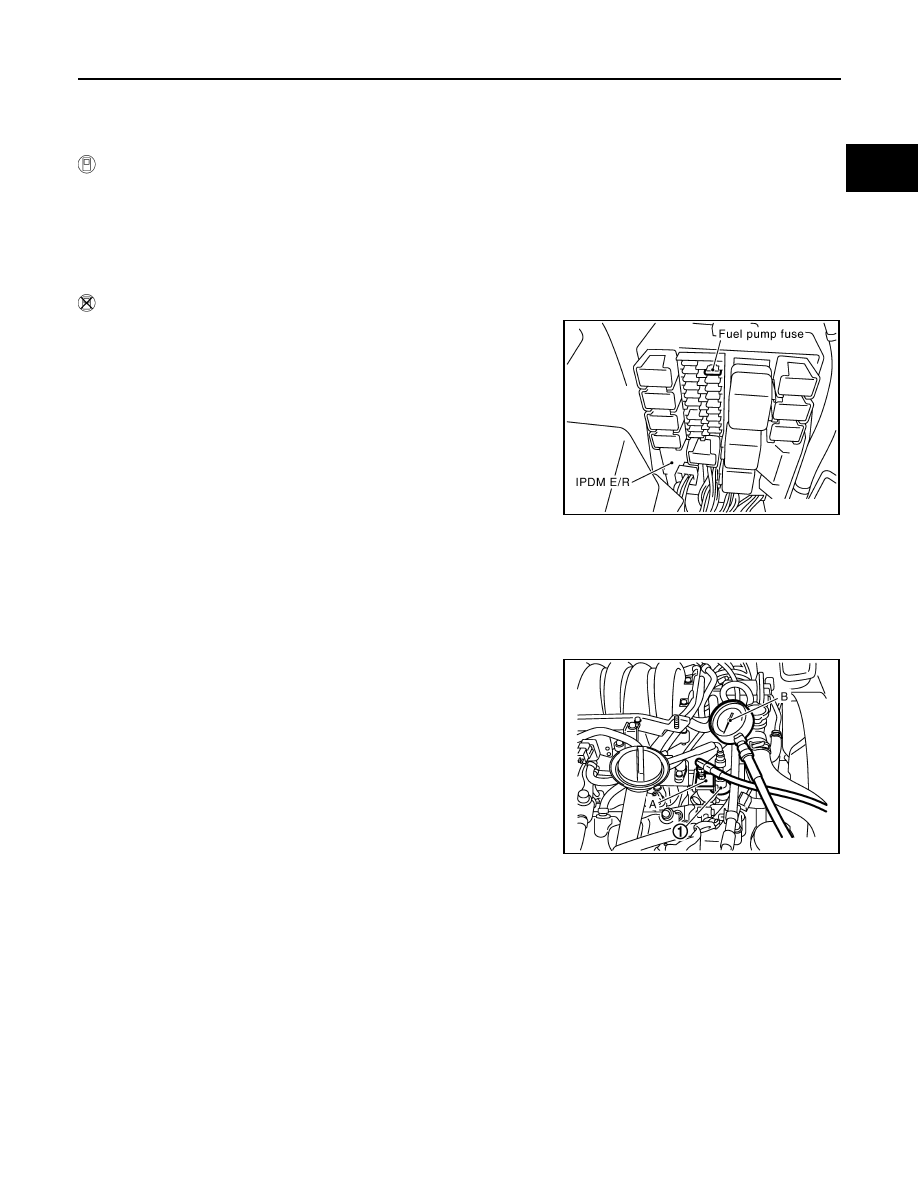Infiniti FX35 / FX45. Manual - part 476

BASIC SERVICE PROCEDURE
EC-665
< SERVICE INFORMATION >
[VK45DE]
C
D
E
F
G
H
I
J
K
L
M
A
EC
N
P
O
Fuel Pressure Check
INFOID:0000000001326522
FUEL PRESSURE RELEASE
With CONSULT-III
1.
Turn ignition switch ON.
2.
Perform “FUEL PRESSURE RELEASE” in “WORK SUPPORT” mode with CONSULT-III.
3.
Start engine.
4.
After engine stalls, crank it two or three times to release all fuel pressure.
5.
Turn ignition switch OFF.
Without CONSULT-III
1.
Remove fuel pump fuse located in IPDM E/R.
2.
Start engine.
3.
After engine stalls, crank it 2 or 3 times to release all fuel pres-
sure.
4.
Turn ignition switch OFF.
5.
Reinstall fuel pump fuse after servicing fuel system.
FUEL PRESSURE CHECK
Before disconnecting fuel line, release fuel pressure from fuel line to eliminate danger.
NOTE:
• Prepare pans or saucers under the disconnected fuel line because the fuel may spill out. The fuel
pressure cannot be completely released because S50 models do not have fuel return system.
• Use Fuel Pressure Gauge Kit (J-44321) to check fuel pressure.
1.
Release fuel pressure to zero. Refer to "FUEL PRESSURE RELEASE".
2.
Install the inline fuel quick disconnected fitting A between fuel
damper (1) and fuel tube.
3.
Connect the fuel pressure gauge B (quick connector adapter
hose) to the inline fuel quick disconnected fitting.
4.
Turn ignition switch ON and check for fuel leakage.
5.
Start engine and check for fuel leakage.
6.
Read the indication of fuel pressure gauge.
7.
If result is unsatisfactory, go to next step.
8.
Check the following.
• Fuel hoses and fuel tubes for clogging
• Fuel filter for clogging
• Fuel pump
• Fuel pressure regulator for clogging
If OK, replace fuel level sensor unit, fuel filter and fuel pump assembly.
If NG, repair or replace.
PBIB1482E
At idling:
Approximately 350 kPa (3.57 kg/cm
2
, 51 psi)
PBIB3244E